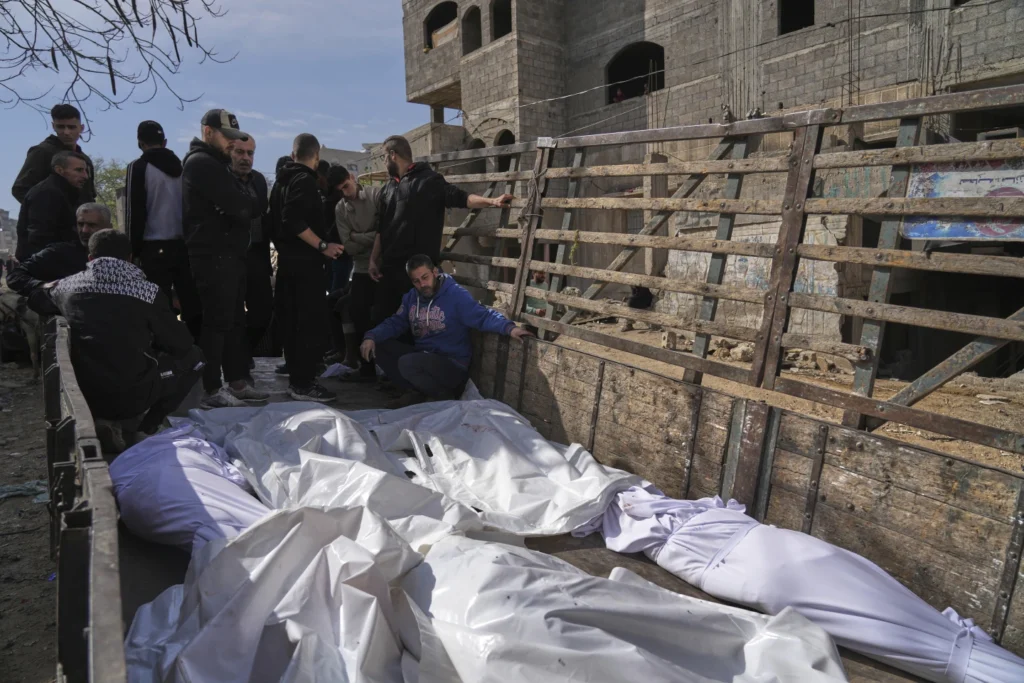JERUSALEM — Israeli Defense Minister Israel Katz announced Wednesday that Israeli forces will maintain indefinite control over designated “security zones” in Gaza, Lebanon, and Syria, signaling a hardened military stance that could derail fragile ceasefire negotiations with Hamas and deepen regional tensions.

Katz’s statement reflects a significant shift in Israel’s military posture, as the country faces mounting international criticism over its ongoing operations in Gaza and beyond. “Unlike in the past, the [Israeli military] is not evacuating areas that have been cleared and seized,” Katz said. “The military will remain in the security zones as a buffer between the enemy and Israeli communities — in Gaza, as well as in Lebanon and Syria — whether the situation is temporary or permanent.”
The declaration follows a surge in Israeli airstrikes across the Gaza Strip that killed 22 Palestinians on Wednesday, including an infant girl who was just weeks away from her first birthday. Her mother, wounded in the same strike, was seen embracing her daughter’s lifeless body, clad in a bloodstained blue dress, before the child was buried.
The renewed Israeli offensive comes in response to the collapse of a previous ceasefire and is aimed at pressuring Hamas to release the remaining hostages taken during the October 7, 2023, attack. That assault left 1,200 Israelis dead, mostly civilians, and 251 taken hostage. Israel says 59 hostages remain in Gaza, of whom 24 are believed to be alive.
Hamas has stated it will not agree to any further releases without a total Israeli withdrawal from Gaza and a lasting ceasefire. In response, families of the hostages have issued a statement criticizing the government’s strategy: “They promised that the hostages come first. In practice, Israel is choosing to seize territory before the hostages.”
Israeli forces have seized control of more than half of Gaza’s territory. The military maintains that holding ground is essential to preventing future attacks similar to the one launched by Hamas last year. Prime Minister Benjamin Netanyahu has vowed to “eliminate Hamas” and enforce a new regional security strategy, which includes keeping troops stationed in Lebanon and Syria as well.
The move has drawn sharp condemnation from neighboring countries. Lebanese President Joseph Aoun said Israel’s continued presence in parts of Lebanon is obstructing full Lebanese army deployment, as outlined in a previous ceasefire. On Wednesday, two Israeli drone strikes in southern Lebanon killed two people, pushing the civilian death toll in Lebanon since November to more than 70, according to the United Nations.
In southern Syria, Israeli forces have retained a buffer zone following the ousting of President Bashar al-Assad in December, citing similar security concerns.
The humanitarian situation in Gaza has worsened dramatically amid continued bombings and a blockade that has entered its seventh week. The United Nations Office for the Coordination of Humanitarian Affairs (OCHA) reports a sharp rise in acute malnutrition across the Gaza Strip. Nearly 90% of Gaza’s 2 million residents are now displaced, many of them forced to move multiple times and currently living in overcrowded tent camps with dwindling food and water supplies.
Water scarcity is a growing crisis. Gaza’s Coastal Water Utility says each person receives just six to seven liters of potable water daily — a situation Deputy Director Omar Shatat describes as a “catastrophe.” Displaced residents queue for hours with plastic containers, hoping for a turn at a water truck.
Israeli airstrikes continue to take a devastating toll on civilians. Footage from the latest attack shows the mother of one-year-old Ahlam Seiam, heavily bandaged, cradling her daughter’s body in a hospital bed. Her family had relocated to Khan Younis from Rafah just weeks earlier. “Wherever you go, death will catch up with you,” said Ahlam’s grandfather, Nashat Seiam.
Palestinian health authorities report more than 51,000 deaths in Gaza since the start of the conflict, with women and children accounting for over half. Israel claims it has killed around 20,000 militants but has yet to provide evidence supporting that number.
Meanwhile, Netanyahu’s government is also facing backlash for its support of a controversial proposal by U.S. President Donald Trump to facilitate the “voluntary emigration” of Palestinians from Gaza to other countries. Palestinians and Arab nations have widely condemned the plan as a veiled attempt at ethnic displacement, likening it to the mass expulsions that occurred during Israel’s founding in 1948.
On Wednesday, Palestinian Islamic Jihad released a video of Israeli hostage Rom Braslavski, the first sign of life since his capture. Filmed under duress, he pleads with Netanyahu to end the war and allow humanitarian aid into Gaza.
Despite growing international concern, Netanyahu’s far-right coalition remains firm in its military and political objectives, with some partners calling for the reestablishment of Israeli settlements in Gaza — a move considered illegal under international law.
As ceasefire talks stagnate and civilian casualties rise, Israel’s insistence on indefinite troop presence across multiple fronts has raised new questions about the long-term prospects for regional stability and humanitarian relief.



